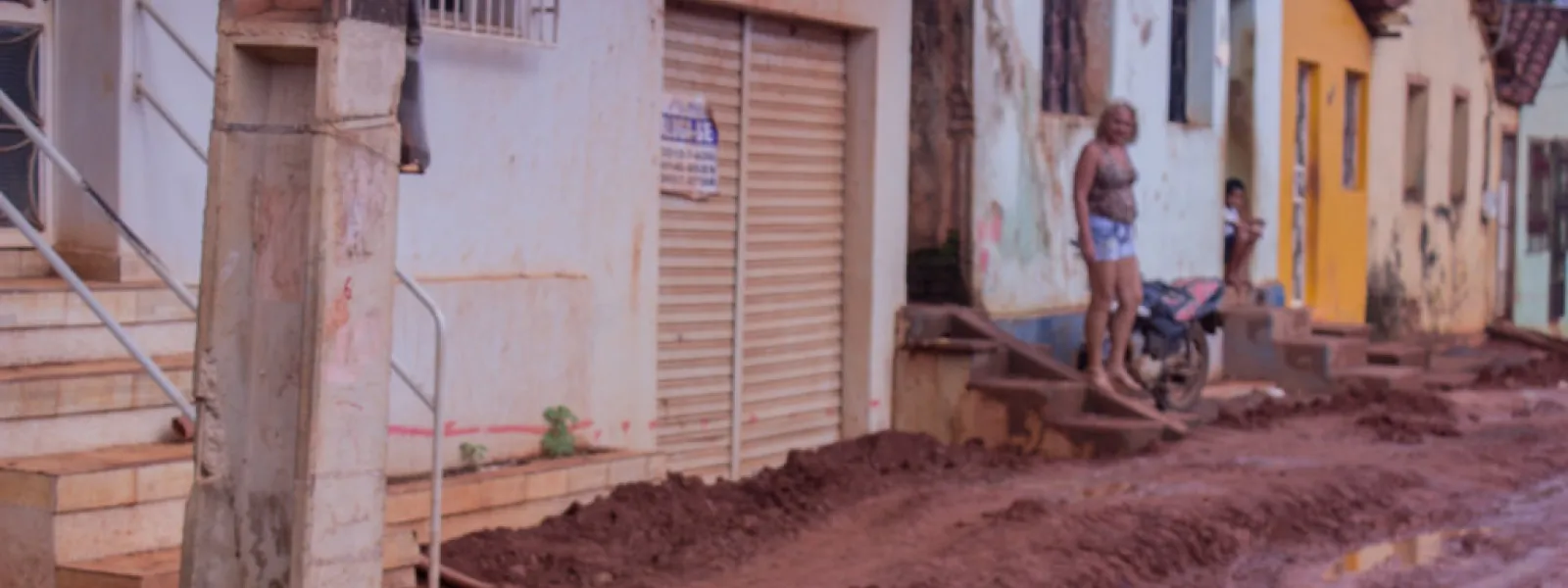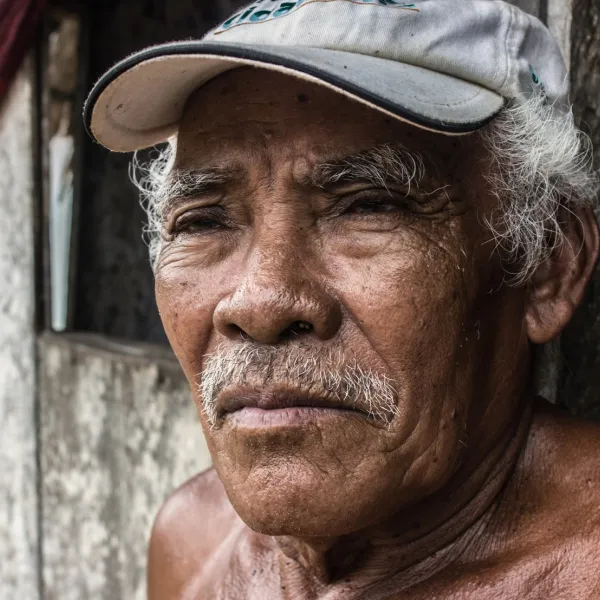
Project
Maíra Irigaray / Amazon WatchFazendo com que o Brasil se responsabilize pelos danos da represa Belo Monte
Quando em pleno funcionamento, Belo Monte será a terceira maior usina hidrelétrica do mundo, construída em um dos ecossistemas mais importantes do planeta: a floresta Amazônica. Localizada no rio Xingu, no Pará, um estado do norte do Brasil, o reservatório cobrirá mais de 500 quilômetros quadrados de florestas e terras agrícolas, uma área do tamanho da cidade de Chicago.
Para a população da Bacia do Xingu, a construção de Belo Monte tem significado a perda do acesso à água, à alimentação, à moradia, ao trabalho e ao transporte. Ao menos 20 mil pessoas serão deslocadas.
O governo e o consórcio encarregado do projeto começaram a construir a usina sem antes consultar primeiro as pessoas da região, muitas das quais são indígenas. Negligenciaram a normativa internacional de direitos humanos, a qual requer o consentimento prévio, livre e informado das comunidade indígenas afetadas. O Brasil também descumpriu as medidas cautelares outorgadas pela Comissão Interamericana de Direitos Humanos, as quais destinavam-se a proteger a vida, saúde e integridade das comunidades.
A represa começou a operar, ainda que não em plena capacidade. Recentemente um tribunal federal suspendeu a Licença de Operação do empreendimento devido à falta de cumprimento, por parte do consórcio, com as obras de saneamento básico em Altamira, cidade diretamente afetada pela hidroelétrica.
Consulta o expediente de fatos do caso
Partners:

Related projects
Jury finds former owners of lead smelter liable for $358.5 million in damages
Doe Run Investment Holdings Company, Fluor Corporation and A.T. Massey Coal knew that lead pollution was harming children’s health. St. Louis, Missouri — Last Friday, the former owners of a lead smelter in Herculaneum, Missouri, were found liable for $320 million in punitive damages for negligently exposing 16 children and other residents living in the area to harmful lead pollution. “They obviously wanted to send a message: Don't choose profits over people,” said Mark Bronson, a lawyer for the plaintiffs, to the St. Louis Post-Dispatch. The jury awarded $320 million in punitive damages last Friday, July 29, against the Missouri-based Doe Run Investment Holdings Company, Texas-based Fluor Corporation and Virginia-based A.T. Massey Coal, corporations that owned the smelter prior to 1994. A day earlier, a civil judge had ruled that the three companies would have to pay $38.5 million to the families as compensation for health problems and lost lifetime earnings as a result of pollution that occurred between 1986 and 1994. It should be noted that according to court documents the current owner of the smelter, Doe Run Resources Corporation, had already reached a settlement with the plaintiffs for an undisclosed sum. This settlement covered the impacts of harmful pollution that occurred after 1994. DOE RUN PERU AND THE CASE OF LA OROYA Doe Run Resources Corporation is a subsidiary of Renco Holding Company, owned by Ira Rennert. After buying Doe Run Resources, Renco purchased the La Oroya Metallurgical Complex in 1997 and established another subsidiary, Doe Run Peru (DRP), to operate it. DRP has kept the La Oroya smelter idle since 2009, and is negotiating with the government to reopen it. AIDA and the SPDA have worked since 1997 to encourage the Peruvian government to hold DRP accountable for the pollution in La Oroya, which involves contaminants similar to those found in Herculaneum. The government demanded greater environmental controls at the metallurgical complex, which have not been fully implemented. This year, Renco Holdings began a process of international arbitration within the framework of the Trade Promotion Agreement between Peru and the U.S., arguing among other things that Peru has treated the company unjustly in requiring environmental improvements to the Complex. AIDA and the Asociación Pro Derechos Humanos (APRODEH) have brought a case and a request for precautionary measures on behalf of residents in La Oroya affected by the pollution before the Inter-American Commission on Human Rights. "The amount of damages awarded by the US court indicates the severity of lead contamination, particularly in children, and reminds us once again of the magnitude of human rights violations that have taken place in Missouri and in La Oroya," said Astrid Puentes Riaño , Co-Executive Director of AIDA. "So we insist on greater protections in La Oroya to address the situation there." Ramón Rivero, with the Sociedad Peruana de Derecho Ambiental (SPDA), praised the jury’s verdict and believes that it should be a model for similar cases in other parts of the world. “Measures such as the verdict against Doe Run in the United States are corrective actions taken by a government that aim to justly compensate those affected for the harm they suffered. We have to ask ourselves if the measures taken by the Peruvian government to date, with regard to the harm caused by DRP in La Oroya, comprise such just compensation,” said Rivero. “We need to take steps to protect public health that go beyond measurements and controls and that affect the wellbeing of the residents of La Oroya. We also need to evaluate the possibility of increasing the amount of compensatory damages that have been awarded,” Rivero concluded.
Read moreLiving beyond our means
An article from Waterkeeper on the valuable ecosystems services provided by coastal mangrove swamps and the threats these face from developers.
Read moreCivil society groups go to Court to defend Panama Bay
Groups submit arguments supporting government’s case for maintaining wildlife refuge. Panama City, Panama — Today, on International Mangrove Day, two civil society organizations announce their legal support for the government of Panama in a lawsuit brought by developers challenging the protected status of Panama Bay. The groups, the Interamerican Association for Environmental Defense (AIDA) and the Centro de Incidencia Ambiental (CIAM), submitted legal briefs detailing national and international legal arguments for upholding environmental protections established by the government in 2009 through a resolution issued by the environmental authority in Panama. The developers who are contesting the law, Panama Bay Development and Compañia Lefevre, are seeking to open the area to development of vast tourism complexes. Extensive tourism in the area would bring devastating environmental impacts to the sensitive ecosystem. The Panama Bay coastline is ringed with miles of pristine mangroves, which provide critical breeding ground for species relied upon by Panama’s fishing industry. Each kilometer of mangrove-covered coastline generates about $100,000 USD for Panama annually. Mangroves also help protect Panama from the effects of global climate change by buffering the coast from increasingly powerful tropical storms and by storing carbon from the atmosphere in their roots. A mangrove forest can sequester 50 times more carbon than a tropical forest of the same size, making mangroves a conservation priority if countries wish to halt catastrophic climate change. The protected area of Panama Bay is roughly 211,000 acres, slightly larger than the land area of New York City. Panama Bay is one of the earth’s most biodiverse places and is an essential habitat for migratory birds and threatened species such as jaguars and loggerhead turtles. “In the face of ever more powerful and dangerous climate-change-driven tropical storms, destroying coastal mangroves is one of the worst things a country like Panama could do,” said Anna Cederstav, Ph.D., staff scientist and co-director of AIDA. According to Sandra Moguel, an attorney for AIDA in Mexico, “Article four of the Constitution of Panama requires the observance of the rules of international law throughout the territory of that country. Obligations under the Ramsar Convention on Wetlands of International Importance and the Convention on Biological Diversity, both of which have been ratified by Panama, should thus be taken into consideration in deciding the challenge against the natural protected area.” "The creation or declaration of a protected area does not constitute expropriation. What it does is protect and guarantee the right to a healthy environment contained in the Panamanian Constitution” said Maria Acuña, CIAM´s legal advisor.
Read more